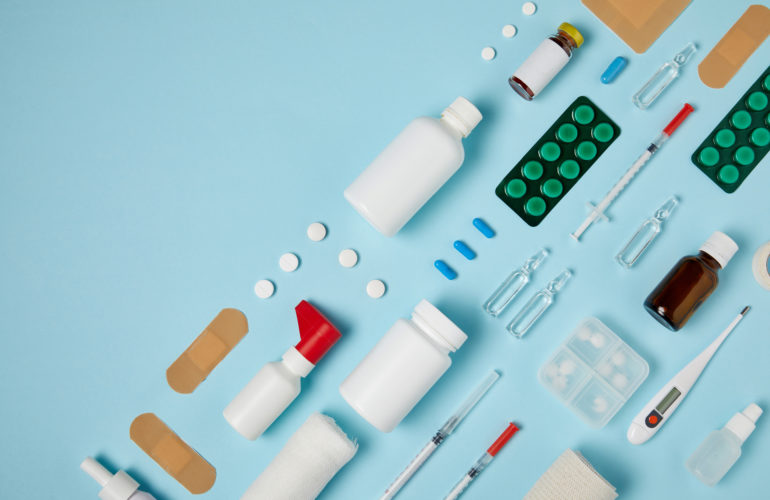The future of the safety officer for medical devices according to the Medical Devices Act (MPG) § 30 was initially unclear with the planning of the new regulation. After the MDR was published, however, it became clear: He will continue to exist in medical technology. But, beware, the safety officer (SIBA) according to MPG and the “responsible person” (VP) in the new MDR are only comparable at first glance and will take on many more tasks in the future than before.
We make the comparison in the areas of post-market surveillance and vigilance and find differences as well as new tasks.
Requirements/proof of expertise
For the safety officer, the Medical Devices Act (MPG) § 30 requires:
1. a college education in science, engineering, or medicine OR other education that qualifies the SIBA to perform his or her duties; AND
2. at least two years of professional experience.
The MDR “Responsible Person” must demonstrate expertise in.
1. higher education in law, medicine, pharmacy, engineering, or other relevant scientific discipline and one year of specific professional experience (regulatory issues or QM related to medical devices); or
2. four years of relevant professional experience (regulatory issues or QM related to medical devices).
In summary:
A college education now only requires one year of work experience for the Responsible Person (MDR), and the field of approved fields of study is broader compared to the Safety Officer.
In the absence of a college degree, the Responsible Person (MDR) is required to have four years of professional experience. No education is required. The safety officer, on the other hand, requires training that qualifies him or her for his or her duties and two years of work experience.
Duties
This is where the differences between SIBA and VP become very apparent. The MPG requires the safety officer “only” to deal with reports of risks: to collect and evaluate data and coordinate necessary measures.
In the MDR, already the definition of the term or the article title offers a clear difference to the safety officer: “Article 15. Person responsible for regulatory compliance”. The scope of duties includes responsibility for.
1. checking the conformity of products before release,
2. preparation and maintenance of technical documentation,
3. post-market surveillance,
4. the fulfillment of reporting requirements for
a. Notification of serious incidents and
Field safety corrective actions (Article 87).
b. Reporting of trends (Article 88)
c. Analysis of serious incidents and
Field safety corrective actions (Article 89).
d. Analysis of vigilance data (Article 90).
e. Implementing acts (Article 91),
5. in the case of investigational devices, to make the declaration that the investigational device complies with the essential safety and performance requirements except for the performance to be demonstrated in the clinical trial.
Thus, the responsibilities of the existing Safety Officer are largely the same as the Responsible Person’s (VP) responsibilities regarding vigilance as stated in item (4).
The responsibility of the VP (MDR) extends with point (3) and (4) over the first and second section of chapter VII of the MDR, which has the long name “post-market surveillance, vigilance and market surveillance” and thus already describes the total of three sections.
The first section, “Post market surveillance” (PMS), which is reflected in task item (3) of the Responsible Person, requires a system for PMS throughout the life of a medical device (Article 83), a plan (Article 84) and a report (to be updated regularly) (Articles 85 and 86). Article 83 requires, among other things, that.
1. the system is part of the quality management system,
2. data on quality, performance, and safety are actively collected and
service life are actively collected and evaluated
3. the data are used in particular for the following purposes:
a. Risk management update
b. Updating of labeling (incl. instructions for use)
c. Updating of clinical evaluation
d. Updating the summary report on safety and clinical
performance (Article 32)
e. Identification of any actions that may be necessary
f. Improvement of the fitness for use
g. Contributing to the monitoring of other products, if applicable
h. Detecting and reporting trends.
The second section “Vigilance” has already been briefly outlined and deals with activities in case of serious incidents, corrective actions in the field and trends towards the same.
The third section, “Market Surveillance,” is addressed to the competent authorities – but it is always worthwhile to take a look at it anyway.
The PMS is designed to ensure the performance and safety of the medical device after it has been placed on the market. A central element of the PMS is the “Periodic Safety Update Report” (PSUR for short) (Article 86), which bundles the information from market surveillance (complaints, trends, notifications, etc.). This report is updated either annually (from class IIb) or biennially (IIa). For Class I medical devices, only one report to be updated as needed is required.
Another component of the PMS is the “Post Market Clinical Follow-up” (PMCF). Under the MDR, manufacturers are required to provide clinical evidence of performance for each medical device – in other words, the manufacturer must plan whether the data available in the clinical evaluation are sufficient in terms of follow-up or whether further follow-up studies need to be conducted, and if so, what type they should be. Since the risk profile, safety and performance of the medical device may also change after it has been placed on the market, it is necessary to update the clinical data and thus also the PMCF plan as the interface between clinical evaluation and PMS throughout the life cycle of the medical device.
What regulatory requirements can be referenced?
On the one hand, you can find previous regulatory requirements, which you can of course still apply transitionally: MEDDEV Guidelines around PMS, clinical evaluations and clinical trials as well as the EN ISO 14155 standard. In the context of the MDR, detailed specifications on requirements can already be found in the legal text itself, and in addition to the EN ISO 14155 on the conduct of clinical trials, however, a document is also being prepared by ISO and the relevant standards committees on the topic of PMS, the ISO/AWI TR 20416.
Are you confused or do you lack the necessary resources? As a Clinical Research Organization (CRO), seleon supports you systematically, safely and reliably with the necessary expertise. Take advantage of our broad range of services and many years of experience to adapt your processes, train your staff or implement complete projects.
Also good to know
Neither the safety officer nor the responsible person may be disadvantaged by their work.
According to the MDR, small and micro companies do not have to hire a Responsible Person, but they must have one available at all times. However, consider the aspect of the unannounced audit! The role of the Responsible Person also does not have to be carried by one person, it may be divided on several shoulders.
In this article, only a part of the tasks of the responsible person according to MDR was considered (Article 15 [c] and [d]). However, the points concerning conformity assessment of medical devices and technical documentation are also part of the VP’s range of tasks. Is it getting too confusing for you? Here, too, we will be happy to advise you with our many years of experience.
Please note that all details and listings do not claim to be complete, are without guarantee and are for information purposes only.




